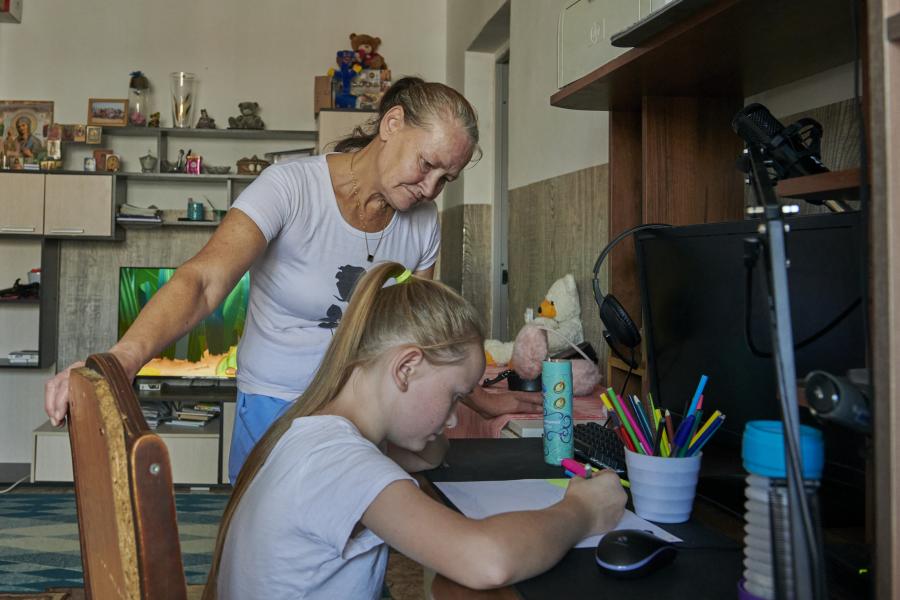Main documents
Across Central Asia, UNHCR focuses on strengthening local ownership and quality of asylum systems, promoting local integration of refugees, eradicating statelessness, and collaborating with partners on emergency preparedness and response.
Since their independence in 1991, Central Asian countries have generously sheltered thousands of people fleeing war, persecution, or human rights violations. Most refugees in Central Asia have been living there for years, or even decades. They often speak local languages, and many have family ties with citizens. UNHCR works with governments to fulfil international obligations, as well as pledges made to the Global Compact on Refugees, enabling refugees to contribute to the sustainable development of the communities generously hosting them.
Central Asia is also home to a considerable stateless population – largely a result of the dissolution of the Soviet Union. Without legal identity, stateless people often have difficulty accessing basic rights and services such as education, healthcare, employment and freedom of movement. UNHCR promotes the alignment of national citizenship and statelessness laws with international standards, and advocates for Kazakhstan, the Kyrgyz Republic, Tajikistan, and Uzbekistan to join Turkmenistan in acceding to the UN Statelessness Conventions. Since the launch of the #IBelong Campaign in 2014, Central Asia has resolved the cases of nearly 200,000 stateless people.
The UNHCR Representation to Central Asia is in Almaty, Kazakhstan. UNHCR has National Offices in Astana, Kazakhstan; Bishkek, the Kyrgyz Republic; and Dushanbe, Tajikistan. The UNHCR Regional Humanitarian Logistics Hub is in Termez, Uzbekistan.
Explore the UNHCR Central Asia page to access additional information and UNHCR's news and stories related to in Kazakhstan, Kyrgyzstan, Tajikistan, Uzbekistan and Turkmenistan.
Populations
Population types
Note: The "Stateless" category does not include stateless people who are also in other categories, to avoid double counting. The total number of stateless, across all categories, is .
NB: 2025 figures are planning figures.
Source: UNHCR Refugee Data Finder for years until 2022, UNHCR planning figures (COMPASS) otherwise.
Population by country
NB: 2025 figures are planning figures.
Source: UNHCR Refugee Data Finder for years until 2022, UNHCR planning figures (COMPASS) otherwise.
Population by origin
NB: 2025 figures are planning figures.
Source: UNHCR Refugee Data Finder for years until 2022, UNHCR planning figures (COMPASS) otherwise.
Financials
Budget and expenditure trend
Budget information for the current year is updated monthly, while budget and expenditure information for all other years are final.
Budget by pillar
Budget by objective
Note: The table presents the budget for this operation broken down at the objective level. Resource allocation at the objective level is subject to change during the course of the year as the operational situation evolves and priorities shift. The current budget, reflected in the bottom line of this table, is updated on a monthly basis and is replaced by the final budget at year-end.
Expenditure by Outcome Area
Budget by Impact Area
Source: 2023 budget as approved by the Executive Committee in October 2022.
2022 current budget as approved by the High Commissioner as of October 2022; pending presentation to the ExCom's Standing Committee.
Budget by Outcome and Enabling Areas
Source: 2023 budget as approved by the Executive Committee in October 2022.
2022 current budget as approved by the High Commissioner as of October 2022; pending presentation to the ExCom's Standing Committee.
Budget by Impact Area
Source: 2024 budget and 2023 current budget are taken from the budget document approved by UNHCR's Executive Committee in October 2023.
Budget by Impact Area
Budget information for the current year is updated monthly, while budget and expenditure information for all other years are final.
Budget by Outcome and Enabling Areas
Budget by Outcome and Enabling Areas
Budget information for the current year is updated monthly, while budget and expenditure information for all other years are final.
Budget by Impact Area
Budget by Outcome and Enabling Areas
Strategy
Impact Statements
Latest updates
The boundaries and names shown and the designations used on this map do not imply official endorsement or acceptance by the United Nations.
UNHCR GIS data is publicly accessible in the Operational Data Portal







